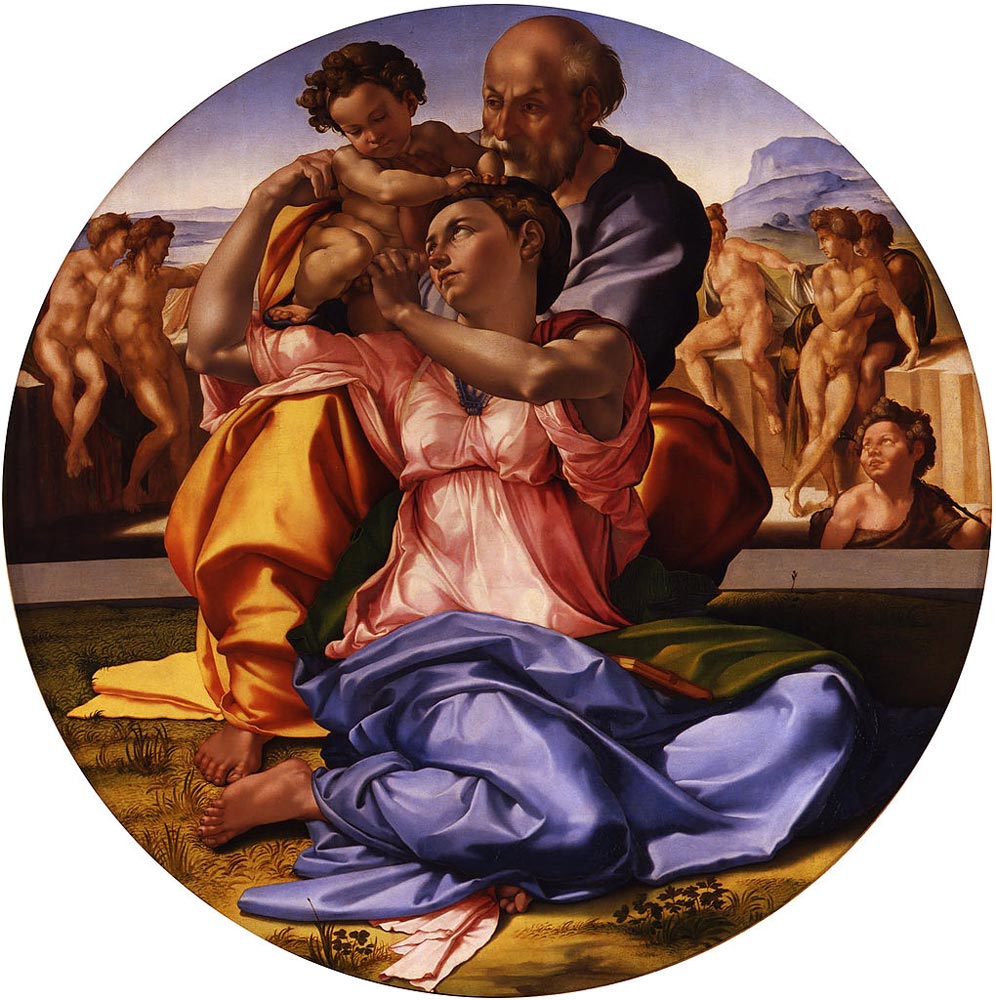| Doni Tondo | |
|---|---|
 |
|
| Artist | Michelangelo |
| Year | c. 1507 |
| Medium | Oil and tempera on panel |
| Location | Uffizi of Florence, Italy |
| Dimensions | 47.5 in diameter |
| 120 cm in diameter | |
The Doni Tondo is a famous painting by Michelangelo, also known as the Doni Madonna, or the Holy Family. It is a panel painting in a round frame and holds the distinction of being the only such painting that is indisputably Michelangelo’s work. The painting was done as a commissioned work for Agnolo Doni to mark the occasion of his marriage to Maddalena Strozzi.
When and How Was It Made?
Art historians have dated the painting to either 1506 or 1507, and it was certainly done immediately before Michelangelo began working on his immense Sistine Chapel project.
As a depiction of the Holy Family of Christianity, the Doni Tondo has several unique characteristics. Mary appears at the center of the composition, Joseph stands behind her, and the infant Jesus is being held by both mother and father, while John the Baptist is prominent in the right middle ground.
Just between the foreground and John is a horizontal curb or band that serves as a separation. In the background on both sides are 5 nudes, and historians are still undecided as to their significance in the work as a whole. Behind the nude figures and forming the backdrop for the entire round painting is a landscape of rocky hills. The frame itself is part of the work and is three dimensional, with human heads, plants and flowers among other objects carved into the wood.
What Is Its Significance?
The Doni Tondo is known to be the only time Michelangelo painted without an assistant. As such it employs and exemplifies many of his signature techniques, methods he would put to masterful use in later and larger works. The figures and draped clothing have the smooth and slightly unreal look of sculpture, and the contrast between brighter and more subdued colors is striking. He uses a shading method that lends a softer almost unfocused quality to the background figures, while making sure that the primary figures stand out in sharp detail.